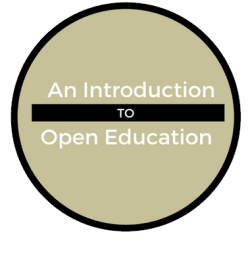Week 5 of #OpenEdMOOC is about “Research on OER Impact and Effectiveness”. Certainly, OER adoption would somewhat increase if this research could prove that OERs do function equally well as commercial textbooks. To prove this, the research would have to copy the goals and measures from the traditional expectations that people have. I think there is a danger, then, that such expectations focus too much on how easily stuff can be ingested — a Nuremberg Funnel would be the ideal exchange value for the many dollars of a commercial textbook, wouldn’t it?
But such a measure of effectiveness would be questionable. In my own discipline, math, we have the saying:
“A king’s road to mathematics does not exist.” There are, instead, two completely different goals. One is to learn how to apply the rules for the necessary calculations that you may have to carry out in later life. The other one is to learn mathematical thinking. If you focus on making the former as easy as possible (which is a legitimate goal), it is less probable that mathematical thinking emerges. For example, if you always have perfect pictures, visualisations and simulations in your textbook media, you will memorize the concepts and procedures quicker, but you won’t develop the ability to visualize difficult relationships on your own, i.e., if the abstract is made less abstract for you, you won’t learn from it how to cope with new abstract things.
To repeat an older metaphor: If we compare learning to carrying a load upstairs to the attic storage, there are two distinct goals. One is that the load should be stored up there, and the other is to work out one’s muscles. If it is only necessary that the stuff is accumulated up there in our brain, a ‘lift’ would be a welcome optimization.
 Picture: ‘Attic storage’ by Flickr user adriane_l CC-BY
Picture: ‘Attic storage’ by Flickr user adriane_l CC-BY
So, if measuring the ‘effectiveness’ is mainly about knowledge content and about
storing it safely away (in a
compressed way, i.e. in isolated chunks that are typical for ‘left-brained’ thinking), it will be very unbalanced.
Measuring OERs, by contrast, offers the opportunity to try out and define new criteria. An obvious new affordance is that you practice your mental ‘
muscles‘ more if you have to find your stuff on the web, by navigating and traversing the very connections that ‘are’ the knowledge. But there is much more to research of distributed learning, and much of what I
wrote 9 years ago in week 12 of CCK08, does still apply.
Filed under:
OpenEdMOOC 

 Image: adapted from Distant Shores Media/Sweet Publishing (under CC-BY-SA) and Rodin (Public Domain).
Filed under: OpenEdMOOC
Image: adapted from Distant Shores Media/Sweet Publishing (under CC-BY-SA) and Rodin (Public Domain).
Filed under: OpenEdMOOC  Image: adapted from Distant Shores Media/Sweet Publishing (under CC-BY-SA) and Rodin (Public Domain).
Filed under: OpenEdMOOC
Image: adapted from Distant Shores Media/Sweet Publishing (under CC-BY-SA) and Rodin (Public Domain).
Filed under: OpenEdMOOC 




